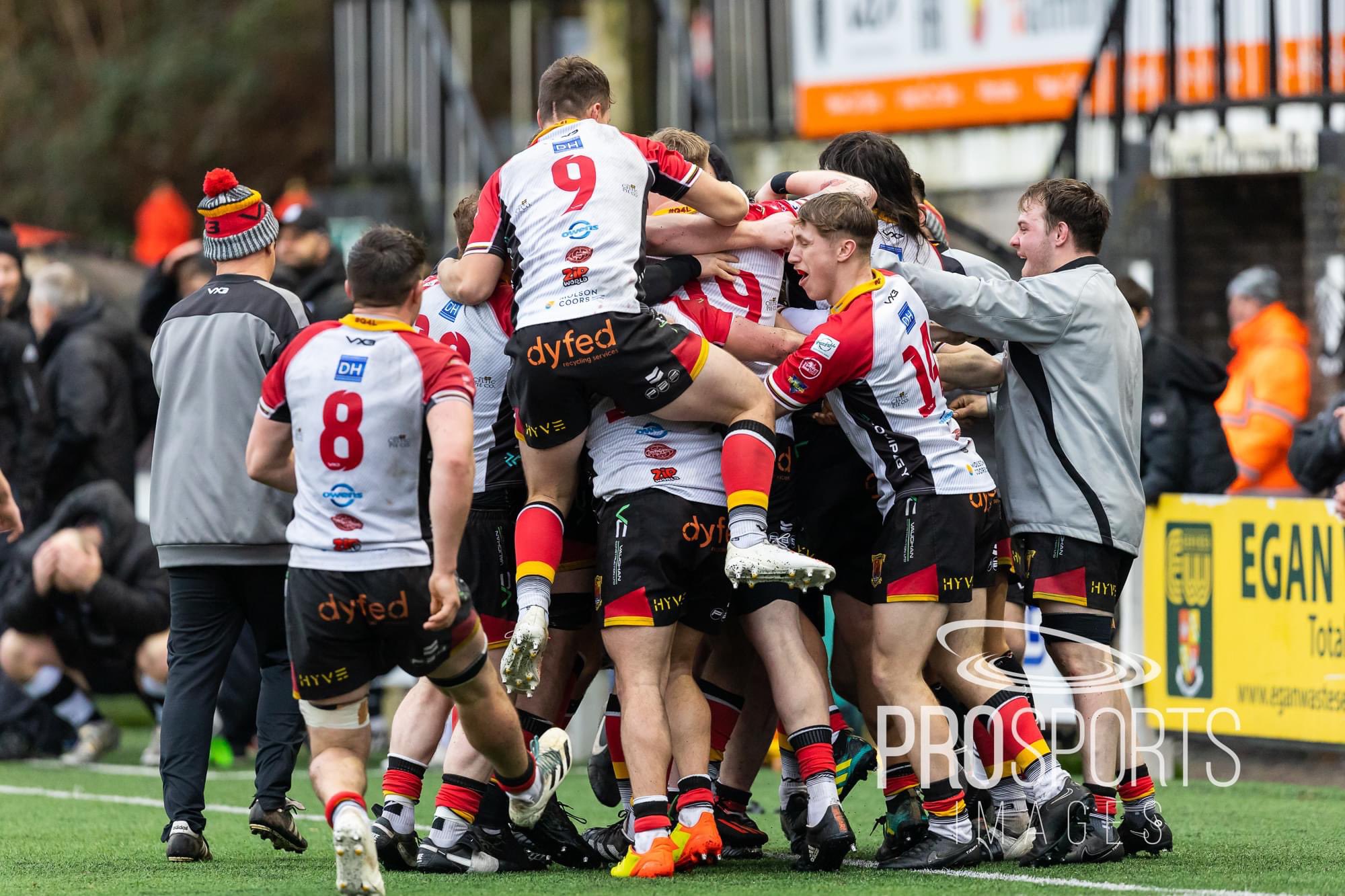A STEP BACK IN TIME
(By Percy Jones)
CARMARTHEN WANDERERS FOOTBALL CLUB/
CARMARTHEN HARLEQUINS R.F.C/
CARMARTHEN R.F.C. (Known as the ‘Quins’)
Carmarthen ‘Quins’ have had a number of team name changes since the club played its first recorded game against Llanelli in December 1875. Initially known as Carmarthen Wanderers Football Club, the first change came in 1911, when the club changed its name to Carmarthen Harlequins RFC. The content in the following report published in the Carmarthen Journal dated 17th October 1947, follows on from a decision made in the pre-season AGM to re-name the club Carmarthen RFC, doing away with the term ‘Harlequins.’ The club has retained the name Carmarthen RFC up to the present but is still known throughout Welsh rugby circles as the ‘Quins.’
CARMARTHEN R.F.C. v YSTALYFERA
11th October 1947
(By kind permission of the Carmarthen Journal)
By their victory of four tries (12 points) to nil against Ystalyfera at Carmarthen Park on Saturday, Carmarthen – as the ‘Quins’ are henceforth to be known, scored the “double” over the Swansea Valley side whom they had defeated a fortnight previously by six points to three. Both packs of forwards were evenly matched but Carmarthen were much superior behind the scrum where a new comer to the side T. Lloyd displayed great thrust at left centre-threequarter. Well built and with an eye for an opening, Lloyd demonstrated the value of cutting through the centre and parting with the ball at the right moment. His partner Gwynfor Davies was not so spectacular but was sound in defence. After a good first half, when Carmarthen led by six points to nil, the team rested on its laurels too long to be comfortable and it looked at one time as if Ystalyfera were going to wipe out the arrears.
The visitors, however, were unable to put the finishing touches to movements which started in promising fashion. Before the end, Carmarthen got their second wind and added two more tries due to smart work in the open on the part of the forwards, and of the individualism of J. Comey, the fast left wing. Both Comey and Evan Thomas on the opposite flank, showed great determination in going for the line and took a lot of stopping.
The game opened with Camarthen on the attack but a firm position was lost through Ivor Morgan (outside-half) throwing a bad pass. In fact, Ystalyfera were able to get near the home line and were only repulsed by a timely touch-finder by Moelwyn Jones who figured at full-back in the absence
through injury, of Jim Davies. Thanks to a lively octet, the home side were again on the attack and T. Lloyd sold a beautiful “dummy” to send Comey over with the first try. A few minutes later, Lloyd was once more in the picture and the forwards joined in a spectacular passing movement. Glyn Davies (Captain), the last to receive, romped over near the posts. As in the first score, there was no conversion and Carmarthen crossed over leading by six clear points.
Harry Yeo (forward) and J. Comey did good things after the restart and then Ystalyfera took up the running. It looked as if the home side had shot their bolt and a visiting centre who was making tracks for the line would surely have scored had not Gwynfor Davies pounced on him from behind. Eventually, Carmarthen sprang to life again and Percy Jones (inside-half) varied his method of attack by punting over the line instead of feeding the men behind him. In the race for possession, Bobby Evans got the touch-down. Still no conversion. The fourth and final score originated in a three-quarter movement which culminated in J. Comey racing along the touch-line. Confronted with the full-back, he kicked over his opponent’s head and managed to put his hand on the ball before it got out of bounds. As an example of perseverance, resource and skill, the effort was probably the best of the match.

